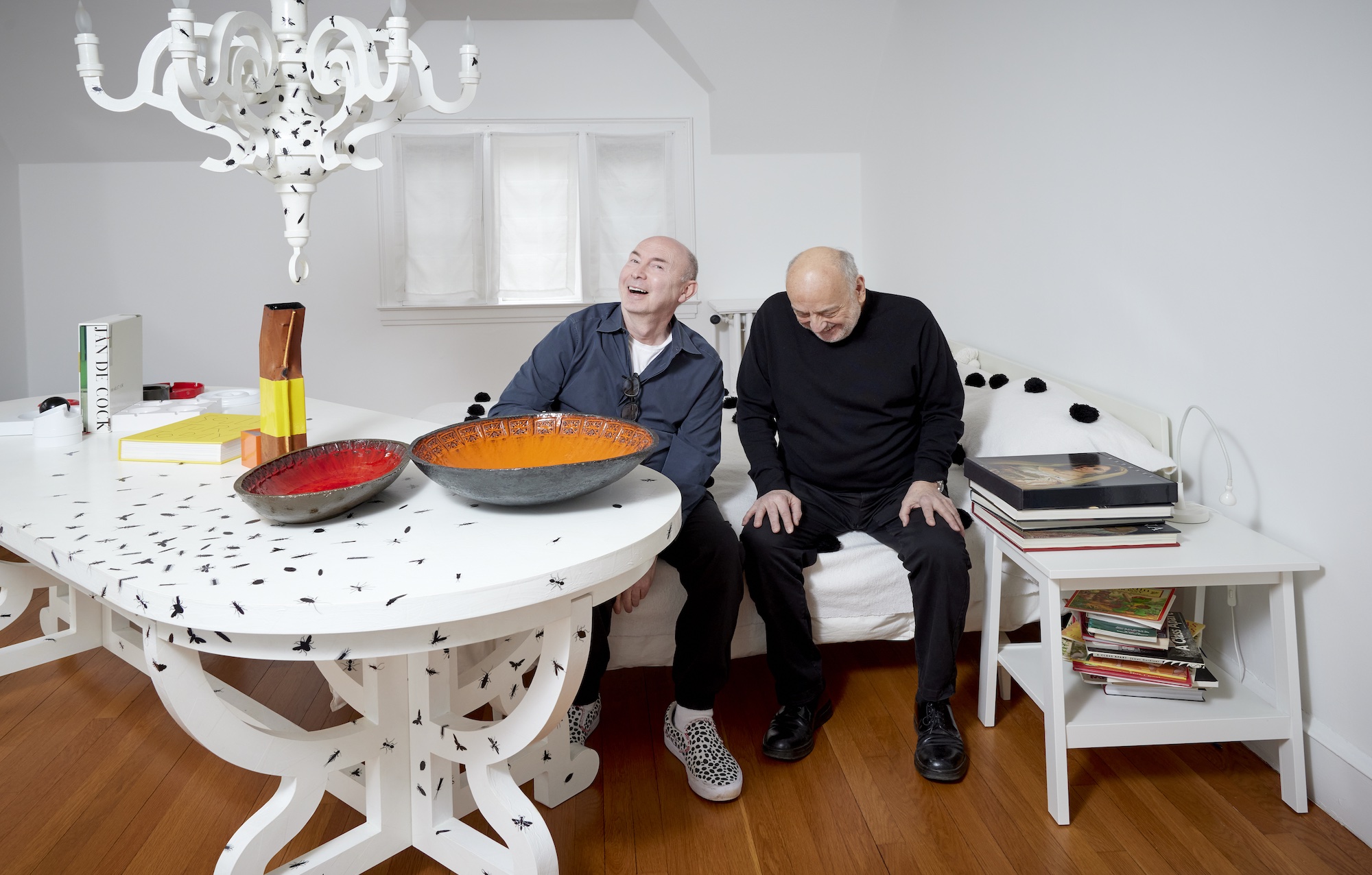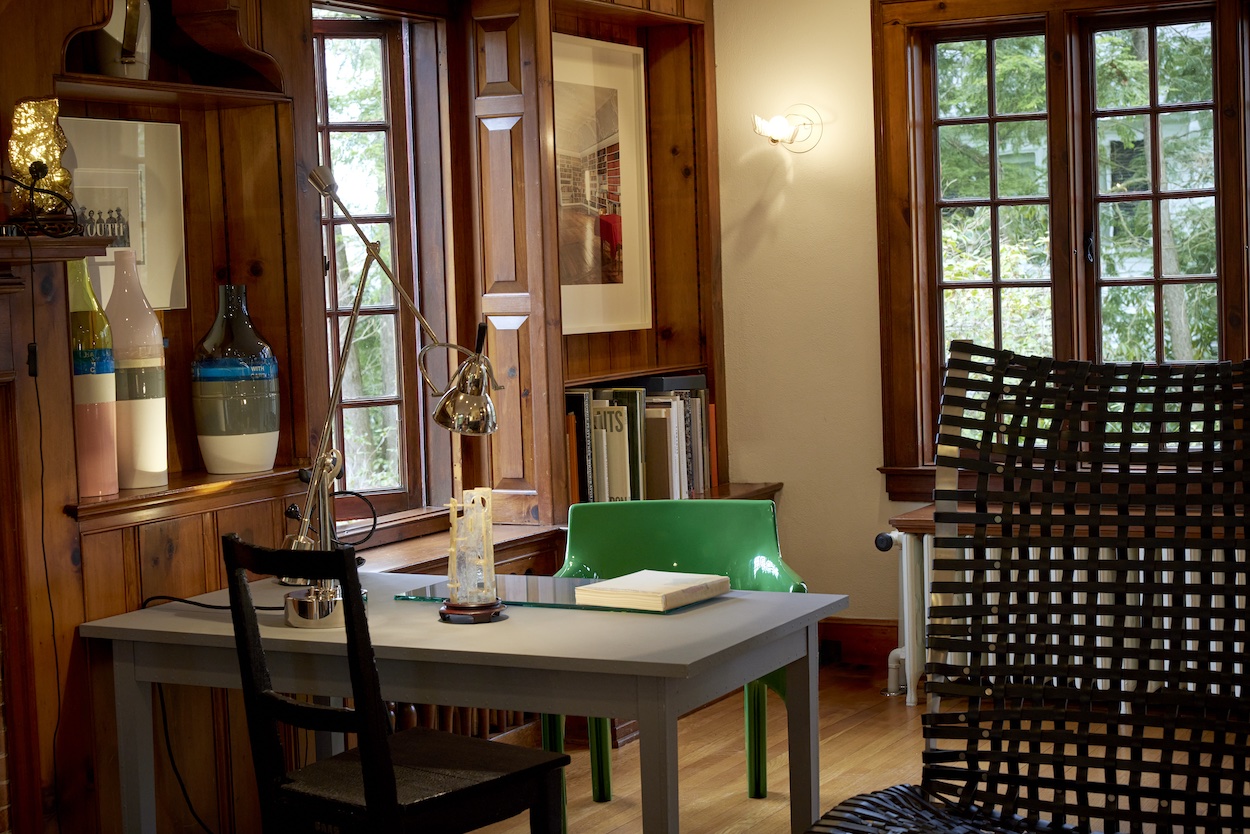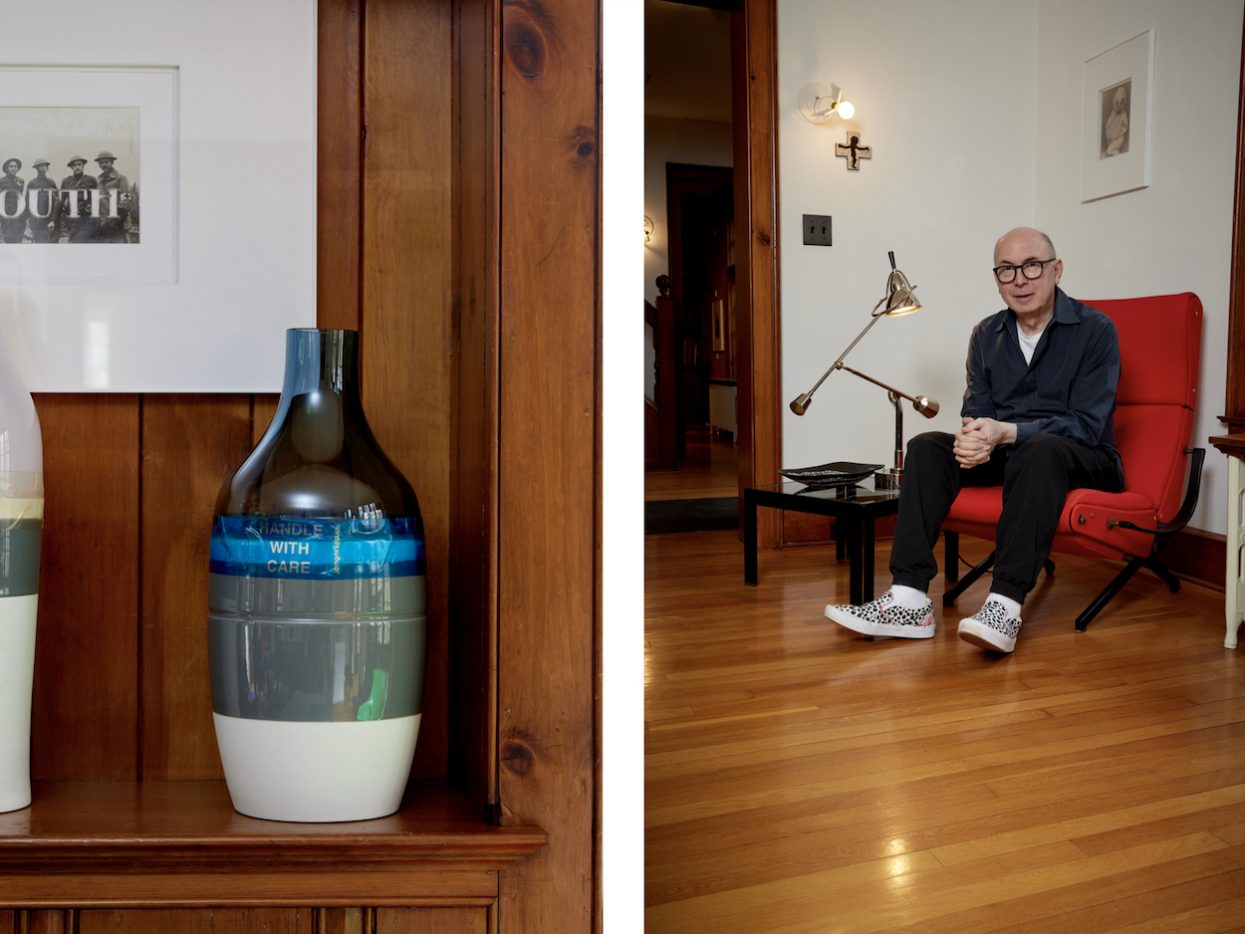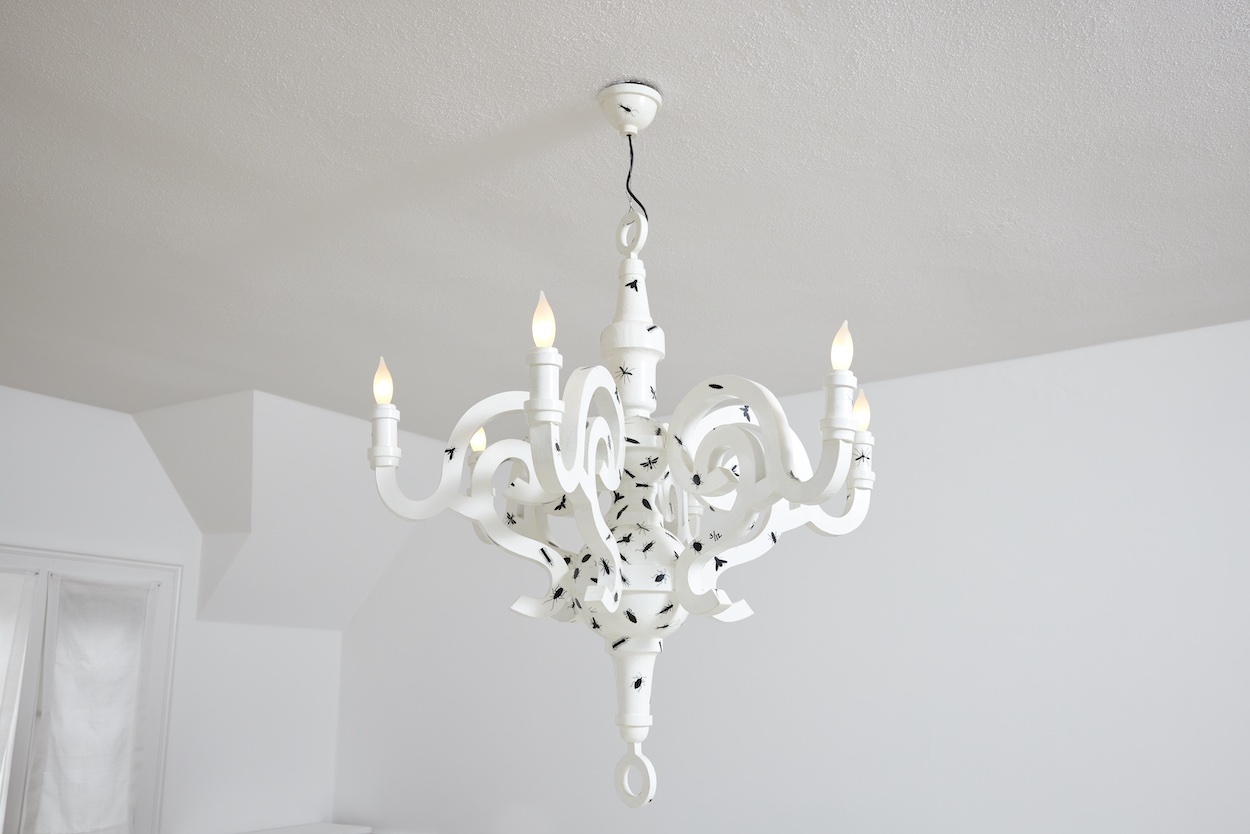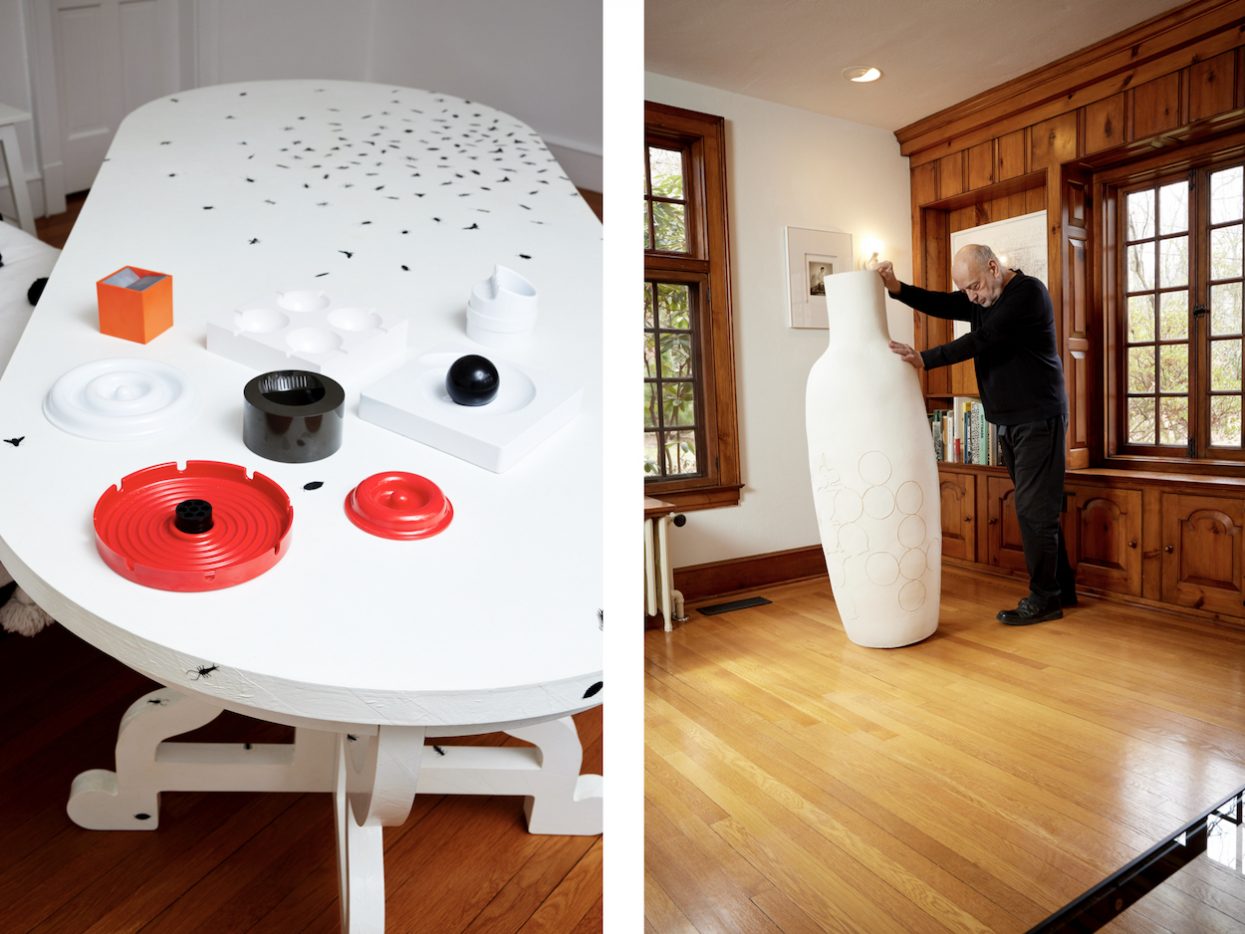Few design galleries can say they’ve ever attained international cult status, but Murray Moss and Franklin Getchell earned bragging rights shortly after opening Moss, a collectible design destination in the heart of SoHo, New York, in 1994. Throughout their gallery’s 18-year run, the charismatic duo championed sculptural works by the likes of the Campana Brothers and Maarten Baas while hosting the occasional Tupperware party and selling Nymphenburg figurines. Though it no longer has a physical footprint, Moss is firmly engraved in the design world’s consciousness as the first truly influential design gallery and—as the story goes—was inspired by MoMA’s design program only to be later referenced by it.
Now, a decade after Moss bid the design world adieu, its owners are teaming up with Design Miami/ to showcase 40 collectible works from their private collection that are now available for purchase. Spanning 20th-century classics to hallmarks of space age design, the eclectic range embodies the unexpected trove of objects one might encounter at Moss during its heyday. Among them are a Spaghetti Lamp by Gaetano Pesce, a Roma Chair from Memphis co-founder Marco Zanini, and a Monumental Vase made exclusively for Moss by Hella Jongerius.
Moss describes the collection, which features several limited-edition pieces commissioned exclusively for the gallery with prices ranging up to $65,000, as deeply personal. “On any given day at the Moss gallery, I would display a wildly eclectic assortment of works into juxtapositions, and these groupings of design works were often funny but equally mysterious, ironic, entertaining, amusing, intelligent, and on occasion, profound,” he says. “With this collection, we present not just a curation of objects, but also an assemblage of our thoughts and observations, which over time has become a unique visual vocabulary.”
If Moss had to pick his favorite of the bunch, however, it would be Cubo ashtray in orange melamine by Bruno Munari for Danese. “I purchased it a long, long time ago directly from the Danese shop in Milan,” he tells Surface. “It’s much more than its function suggests. The ‘60s ashtray, to me, is kin to the ‘60s candy dish and the ‘60s guest towel inasmuch as these curiously populist decorating ‘must-haves’ found themselves to be elemental in defining the taste, economic bracket, and cultural expression of the domestic interior.”
Moss and Getchell admit that showing at Design Miami/ was instrumental in sustaining the gallery’s growth, despite their differences. “Comparing Design Miami/ with the way I structured Moss was like comparing an improvisation to Swan Lake,” Moss quips, contrasting his own penchant for structure with the fair’s “confrontational” nature. “It required for me a change in my rhythms, a trust in my gut reactions, and a positive and enjoyable alertness akin to a televised game show.”
In many ways, that alertness and quick-witted response has helped sustain Design Miami/ through uncertain times, namely a pandemic that halted in-person events and saw the fair double down on virtual programming by launching an e-commerce platform and augmented reality tool so enthusiasts can explore each edition remotely. It also provided the infrastructure for the fair to quickly launch virtual benefit auctions during crises in both Beirut and Ukraine, cementing itself as a vitalizing force within an industry that normally thrives on seeing, feeling, and experiencing physical objects but was grappling with forced distance for the first time. So presenting a thrilling array of a beloved gallery’s most treasured objects is a natural course of action.
Design Miami/ x MOSS will be available for purchase through April 26.
